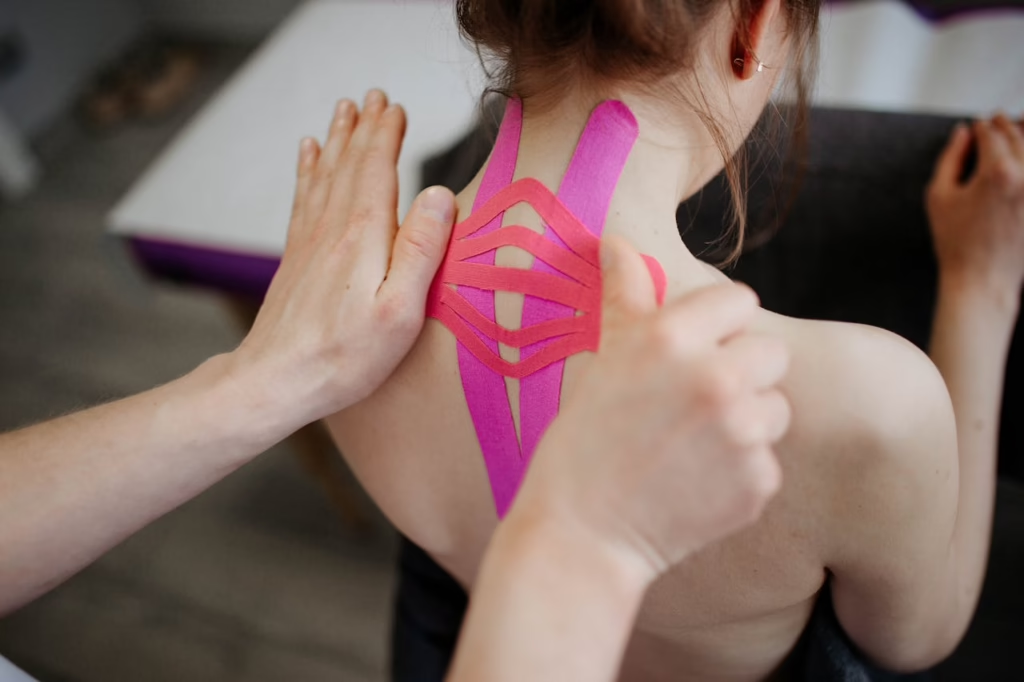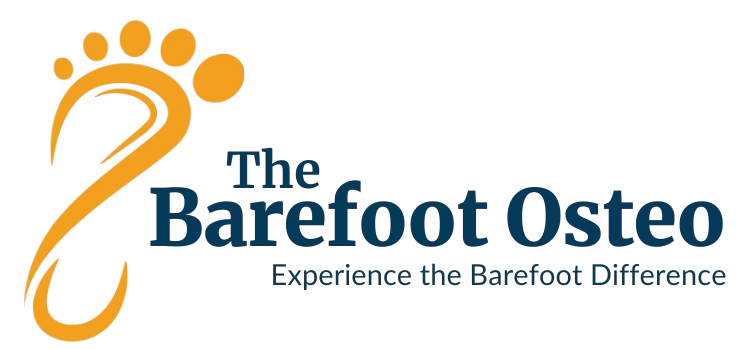Headaches are a common challenge, affecting people from all walks of life and significantly disrupting daily routines. Whether it’s tension, migraines, or cervicogenic headaches, finding effective ways to manage the discomfort can feel overwhelming. Osteopathy for headaches offers a holistic approach, addressing potential contributing factors like muscle tension, posture, and mobility issues. By focusing on the body’s natural balance and alignment, osteopathy aims to support overall well-being and provide practical strategies for headache management.
Understanding the body as an interconnected system is crucial when addressing headaches. Osteopathy offers a unique, evidence-informed approach by focusing on the potential contributing factors, such as musculoskeletal imbalances, neck tension, and overall posture. Rather than targeting symptoms alone, osteopathy works to support the body’s natural movement and function, aiming to improve balance and mobility in ways that may help with headache management.
Research highlights the role of cervical spine dysfunction and tension in certain headache types, such as cervicogenic headaches, emphasizing the importance of addressing underlying mechanical issues. By considering factors like ergonomic adjustments, movement habits, and manual therapy, osteopathy provides a framework that aligns with your body’s needs to support overall well-being and comfort.

Understanding Headaches
Headaches are one of the most common health concerns, affecting people of all ages and backgrounds. Their causes can range from everyday factors like stress and posture to more complex underlying conditions. Understanding the different types of headaches is essential for finding effective management strategies and addressing their root causes. By exploring the distinction between primary and secondary headaches, we can begin to appreciate the complexity of these conditions.
Osteopathy for headaches provides a framework for understanding how the body’s interconnected systems contribute to both primary and secondary headache types. By addressing contributing factors such as posture, muscle tension, and lifestyle habits, osteopathy takes a comprehensive approach to headache management.
What Are Primary and Secondary Headaches?
Primary headaches are conditions in which the headache itself is the primary issue, rather than a symptom of another condition. Common examples include:
- Migraines: Often characterized by moderate to severe throbbing pain, usually on one side of the head. Migraines can be accompanied by symptoms such as nausea, sensitivity to light or sound, and aura (visual or sensory disturbances).
- Tension-type headaches: These present as a dull, aching pain that feels like a tight band around the head, often triggered by stress or muscle tension.
- Cluster headaches: A rarer form of headache, marked by severe, sharp pain usually around one eye, often occurring in repeated episodes or “clusters”.
Primary headaches are thought to result from changes in the brain, nerves, or blood vessels rather than structural abnormalities. These types are often chronic or recurrent, requiring a multifaceted approach to management that includes lifestyle adjustments and targeted care.

Secondary Headaches
Secondary headaches are caused by another medical condition or external factor. Unlike primary headaches, they are symptoms of an underlying issue such as:
- Cervicogenic headaches: Originating from dysfunction or tension in the neck, often presenting as pain that radiates to the head.
- Sinus headaches: Caused by inflammation or infection in the sinus cavities, leading to pressure and localized pain.
- Medication-overuse headaches: These can develop when pain relief medications are used too frequently, leading to a rebound effect.
- Serious underlying conditions: Secondary headaches may also indicate conditions like meningitis, hypertension, or trauma
Identifying secondary headaches involves pinpointing the source of the issue, whether it’s musculoskeletal, vascular, or related to another health condition. Proper assessment and treatment are crucial to addressing the root cause effectively.
The distinction between primary and secondary headaches highlights the importance of understanding their triggers and underlying mechanisms. While primary headaches often require long-term management, secondary headaches demand careful evaluation to address their root cause. This foundational understanding sets the stage for exploring the broader impact headaches can have on daily life and well-being.

The Impact of Headaches
Headaches are not just a physical condition—they can significantly affect many aspects of daily life, from personal productivity to emotional well-being. Frequent or severe headaches often disrupt routines, making it difficult to maintain focus, meet responsibilities, or enjoy leisure activities. For many, the struggle lies not only in managing the pain but also in coping with the limitations headaches impose on their quality of life.
Beyond the immediate discomfort, headaches can lead to long-term challenges when left unmanaged. Persistent pain is linked to increased levels of stress, sleep disturbances, and a reduced ability to engage in physical activity. This cycle can perpetuate feelings of frustration and exhaustion, further impacting mental health and overall well-being. By recognizing these broader effects, individuals can take the first step toward addressing the underlying factors that contribute to their headaches.
How Osteopathy for Headaches Supports Cervicogenic Relief
Cervicogenic headaches are a prevalent type of secondary headache, originating from issues within the cervical spine or neck structures. Unlike primary headaches, which arise independently, cervicogenic headaches are referred pains, meaning the discomfort felt in the head is actually sourced from the neck. This distinction is crucial, as it underscores the importance of addressing neck health in the effective management of these headaches.
By focusing on the cervical spine’s mobility and alignment, osteopathy for headaches addresses key structural imbalances that contribute to cervicogenic headaches. This holistic approach includes manual therapy techniques and lifestyle adjustments tailored to individual needs.
Causes of Cervicogenic Headaches
Understanding the root causes of cervicogenic headaches is essential for effective treatment. Several factors can contribute to their development:
- Postural Imbalances: Modern lifestyles often involve prolonged periods of sitting, especially with forward head posture while using computers or mobile devices. This posture increases strain on the cervical spine, leading to muscle tension and joint stress, which can trigger cervicogenic headaches.
- Neck Injuries: Traumas such as whiplash from car accidents or sports injuries can damage cervical structures, resulting in pain that radiates to the head.
- Degenerative Conditions: Age-related changes like cervical osteoarthritis or degenerative disc disease can irritate nerves and joints in the neck, leading to referred pain experienced as headaches.

Triggers of Cervicogenic Headaches
Identifying and managing triggers is a key component in reducing the frequency and intensity of cervicogenic headaches. Common triggers include:
- Sustained Awkward Postures: Maintaining positions that strain the neck, such as prolonged desk work without breaks, can exacerbate symptoms.
- Repetitive Neck Movements: Engaging in activities that involve repetitive neck motions can aggravate cervical structures, leading to headaches.
- Stress and Muscle Tension: Emotional stress often manifests physically, causing muscle tightness in the neck and shoulders, which can precipitate headaches.
How Osteopathy for Headaches Addresses Cervicogenic Pain
Osteopathy offers a holistic approach to managing cervicogenic headaches by addressing the musculoskeletal issues contributing to pain. Osteopathic practitioners utilize manual techniques to improve joint mobility, reduce muscle tension, and enhance overall posture. By focusing on the body’s alignment and function, osteopathy aims to alleviate the underlying causes of cervicogenic headaches, providing a pathway to relief.
Recognizing the causes and triggers of cervicogenic headaches is the first step toward effective management. By addressing these factors, individuals can reduce the impact of headaches on their daily lives. In the following section, we will explore practical tips for managing headaches, empowering you with strategies to take control of your well-being.
Osteopathy for Headaches: A Holistic, Personalized Approach
Osteopathy takes a comprehensive approach to managing headaches, focusing on the interconnectedness of the body’s structures and functions. Unlike conventional treatments that often target symptoms alone, osteopathy works to identify and address the underlying mechanical and lifestyle factors contributing to headaches.
For cervicogenic headaches, this often involves assessing the cervical spine, posture, and surrounding soft tissues. Manual techniques such as myofascial release, soft tissue manipulation, and joint mobilization are used to improve neck mobility, reduce tension, and restore optimal function. These techniques are tailored to the individual, recognizing that no two bodies or headache patterns are exactly alike.

Breathing mechanics also play a significant role. Many individuals with chronic headaches exhibit shallow breathing patterns that exacerbate neck and shoulder tension. Osteopathic treatment often includes guidance on diaphragmatic breathing techniques to promote relaxation and reduce stress on the cervical spine. Research supports the efficacy of these approaches in improving neck function and reducing headache severity over time 1 2.
In addition to manual therapy, osteopaths focus on educating patients about ergonomic adjustments, stress management, and movement habits. These proactive measures empower individuals to maintain their results and reduce the recurrence of headaches.
Why The Barefoot Philosophy Works
At The Barefoot Osteo, we approach headache management through the lens of stability, mobility, and balance—the three pillars of our practice. This philosophy stems from the understanding that the body functions best when these elements are in harmony. For individuals suffering from headaches, imbalances in any of these areas can exacerbate discomfort and limit recovery.
The Barefoot Osteo’s emphasis on mobility, stability, and balance ensures that osteopathy for headaches is not just a treatment but a personalized plan to address the underlying causes of discomfort. This philosophy empowers individuals to find long-term relief while improving their overall well-being.
Stability: The foundation of effective headache management often starts with the neck. A stable cervical spine supports proper alignment, reducing strain on muscles and joints. Osteopathy helps restore this stability by targeting muscle imbalances and joint dysfunctions that contribute to poor posture and neck pain.
Mobility: Restricted movement in the cervical spine or upper back can create compensatory patterns that lead to headaches. Techniques to improve mobility, such as gentle joint mobilizations and stretching, are integral to osteopathic care. By enhancing the body’s natural range of motion, we aim to alleviate pressure on key areas that contribute to headache patterns.
Balance: Achieving balance isn’t just about physical alignment—it’s about ensuring the body can adapt to daily stressors without tipping into discomfort. Whether it’s learning to distribute weight evenly while standing or improving ergonomic setups at work, osteopathic care incorporates strategies to maintain equilibrium in everyday life.
This unique philosophy, combined with evidence-informed techniques, allows us to offer a tailored approach that supports the body’s natural healing processes without over-relying on symptom-focused treatments.

Everyday Tips Aligned with Osteopathy for Headaches
Headaches can often feel like an uphill battle, but taking proactive steps to manage their underlying causes can make a meaningful difference. While every individual’s triggers and responses are unique, incorporating these strategies into your routine may help reduce the frequency and intensity of headaches.
Identifying Triggers
Recognizing what contributes to your headaches is a powerful first step in managing them effectively. Keeping a headache diary can help you uncover patterns and pinpoint triggers. Record the following:
- Time and duration of headaches.
- Activities or environments preceding their onset, such as prolonged screen time or noisy surroundings.
- Dietary habits, noting specific foods or irregular eating patterns that may correlate with headache episodes.
- Emotional states, as stress or anxiety often exacerbate symptoms.
By identifying triggers, you can make informed adjustments to your routine, such as modifying your workspace or scheduling regular breaks. This practice not only empowers you to manage headaches more effectively but also provides valuable insights for osteopathic assessments.

At-Home Preventative Measures
Optimizing Posture
Poor posture is a major contributor to tension headaches and cervicogenic headaches. Small adjustments to your daily habits can alleviate strain on your neck and shoulders:
- Use an ergonomic chair that supports your lower back.
- Position screens at eye level to reduce forward head posture.
- Keep your feet flat on the ground and avoid crossing your legs for extended periods.
Stretching and Mobility Exercises
Incorporating gentle stretches and mobility exercises aligns with the principles of osteopathy for headaches. These practices help reduce muscle tension and promote better cervical spine function, which are essential for managing recurring headaches.
- Neck stretches: Slowly tilt your head from side to side, holding each stretch for 10-15 seconds.
- Shoulder rolls: Rotate your shoulders forward and backward to release tightness.
- Thoracic extension stretches: Use a foam roller or a rolled-up towel to gently open your upper back.
Breathing Techniques
Deep, diaphragmatic breathing promotes relaxation and reduces muscle tension. Practice the following:
- Sit or lie comfortably and place a hand on your abdomen.
- Inhale deeply through your nose, letting your abdomen rise.
- Exhale slowly through your mouth, noticing the tension release.
Creating a Headache-Friendly Environment
Your environment plays a significant role in managing headaches. Consider these practical tips:
- Lighting: Use soft, natural light to reduce eye strain.
- Hydration: Keep a water bottle nearby to prevent dehydration, a common headache trigger.
- Sleep Hygiene: Maintain a consistent sleep schedule and ensure your pillow provides adequate neck support.
- Stress Management: Incorporate mindfulness practices like meditation or yoga to lower overall tension.

Taking small, consistent steps toward managing headaches can lead to noticeable improvements in your daily life. Whether it’s adopting better posture, refining your workspace, or practicing relaxation techniques, these strategies work hand-in-hand with osteopathic care to support your overall well-being. In the next section, we’ll address frequently asked questions about headaches and osteopathy, answering common concerns to help you make informed decisions about your health.
Frequently Asked Questions (FAQs)
Q: How can I tell if my headaches are cervicogenic?
Cervicogenic headaches often start as pain in the neck and radiate to the head. They are typically one-sided and can worsen with specific neck movements or prolonged postures, such as working at a desk. If you notice a pattern of neck discomfort accompanying your headaches, it may be worth exploring this with a healthcare professional, such as an osteopath.
Q: Can osteopathy help with migraines?
While migraines are primarily neurological in origin, osteopathy can help address contributing factors, such as muscle tension or postural imbalances, that may exacerbate symptoms. Techniques that improve neck mobility and reduce tension could complement other management strategies to support overall comfort.
Q: How long does it take to see results from osteopathic treatment?
Many individuals report noticing improvements after just a few sessions, but the timeline varies based on the severity and frequency of headaches, as well as contributing factors like posture and lifestyle. Osteopathy is designed to provide sustainable support, and a tailored plan can help you achieve gradual, long-term benefits.
Q: What lifestyle changes can I make alongside osteopathic care to reduce headaches?
Incorporating simple adjustments, like improving your posture, staying hydrated, and practicing relaxation techniques, can enhance the benefits of osteopathic care. Ergonomic improvements at your desk or regular breaks from screens can also make a significant difference.
Q: Is osteopathy safe for chronic headache management?
Yes, osteopathy is a gentle, non-invasive approach that focuses on supporting the body’s natural functions. Osteopaths use evidence-informed techniques tailored to your specific needs, ensuring a safe and effective experience for managing chronic headaches.
Q: Do I need a referral to see an osteopath for headaches?
In most cases, you don’t need a referral to see an osteopath. However, if you’re experiencing new or severe headaches, it’s important to consult your GP to rule out any underlying conditions before starting treatment. An osteopath can work alongside other healthcare providers to create a holistic care plan.
Conclusion
Headaches can be a complex and frustrating experience, but understanding their causes and triggers is the first step toward finding relief. From recognizing the difference between primary and secondary headaches to exploring the role of lifestyle factors, this blog has provided valuable insights into how headaches can be managed more effectively. Osteopathy offers a unique, evidence-informed approach that considers the interconnectedness of the body, focusing on stability, mobility, and balance to address the root causes of discomfort.
The practical tips outlined in this blog, such as posture adjustments, breathing exercises, and ergonomic improvements, are designed to empower you to take control of your headache management. To make the most of this information, download our Headache Tracker, a handy tool to help you identify patterns and triggers. By tracking your headaches and working with an osteopath, you can develop a personalized plan to support your well-being.
If you’re ready to take the next step, consider booking a consultation with The Barefoot Osteo. Our holistic approach focuses on understanding your unique needs and helping you achieve greater comfort and balance. Your journey to better movement and reduced discomfort starts here—let’s take it one step at a time, together.
References:
Biondi, D. M. (2005). Cervicogenic headache: A review of diagnostic and treatment strategies. Journal of the American Osteopathic Association, 105(4_suppl), 16S–22S.
Bogduk, N. (2009). Cervicogenic headache: An assessment of the evidence on clinical diagnosis, invasive tests, and treatment. The Lancet Neurology, 8(10), 959–968.
Clinch, C. R. (2001). Evaluation of acute headaches in adults. American Family Physician, 63(4), 685–692.
Geissler, K., & Guntinas-Lichius, O. (2014). Differenzialdiagnostik des Kopfschmerzes [Differential diagnosis of headaches]. Laryngo- rhino- otologie, 93(6), 405–421.
Mingels, S., Dankaerts, W., van Etten, L., Bruckers, L., & Granitzer, M. (2021). Spinal postural variability relates to biopsychosocial variables in patients with cervicogenic headache. Scientific Reports, 11(1), 93138.
Nilsson, N. (1995). The prevalence of cervicogenic headache in a random population sample of 20–59 year olds. Spine, 20(17), 1884–1888.
Pareek, A. V., Edmondson, E., & Kung, D. (2024). Cervicogenic headaches: A literature review and proposed multifaceted approach to diagnosis and management. Neurologic Clinics, 42(2), 543–557.
Pereira, K. F., Botelho, W. G. N., Pagliarin, L. G., & Cesar, A. R. A. (2022). Cervicogenic headache: A narrative review. Headache Medicine, 13(3), 186–191.
Sjaastad, O., & Bakketeig, L. S. (2008). Prevalence of cervicogenic headache: Vågå study of headache epidemiology. Acta Neurologica Scandinavica, 117(3), 173–180.
Verma, S., & Tripathi, M. (2021). Cervicogenic headache: Current perspectives. Neurology India, 69(Suppl), S194–S198.









